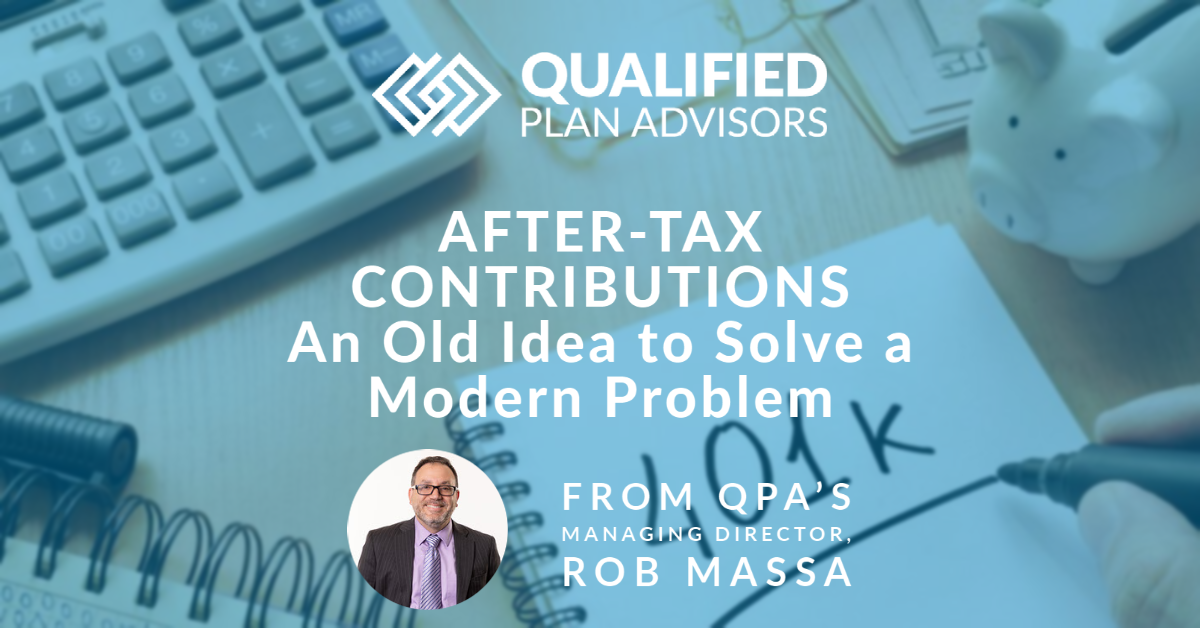Employees in America are stressed about money. 71% suffer from some level of stress related to their personal finances. Even before the pandemic, 38% of employees didn’t have $1,000 saved up to cover emergency expenses. And 63% have indicated that their stress has increased since the onset of COVID-19. [1] So, what can employers do to help their employees?
Sometimes to solve modern problems, you don’t have to innovate, but simply repurpose old ideas. You see, before 401(k) plans became law in the early 1980s, many employees had access to something called a “thrift plan” as part of their benefits package. These programs allowed employees to save money directly from their paycheck on an after-tax basis into an account, and the earnings would grow tax-deferred. So, how does this help your employees and why is it different from other 401(k) or 403(b) contributions?
After-tax contributions (also called Employee Contributions) enable employees to contribute money to your plan that is easily accessible to them. Unlike pretax and Roth contributions dollars, which are only available for withdrawal under limited circumstances, after-tax contribution dollars can be withdrawn at any time. Since the contributions have already been taxed before they’re deposited, the only taxes paid are on the earnings attributable to the after-tax dollars. Plus, since they are contributed to the plan via payroll deduction, just like your other plan contributions, they’re easy to use, making them a nearly ideal way to help the average employee build up an emergency savings fund.
After-tax contributions are also quite versatile, bringing with them an additional benefit to higher paid employees. While pretax and Roth contributions are subject to an annual cap (i.e., $19,500 for 2021 and $26,000 for those age 50 and over)[2], after-tax contributions are not subject to that limit. Rather they are only subject to the annual plan additions limit, which caps aggregate contributions to defined contribution plans (i.e., $58,000 for 2021, or $64,500 if age 50 or over)[3]. Once an employee reaches the $19,500 limit for the year, they may still contribute to the plan on an after-tax basis. The real magic though comes in the next step. You see, if your plan allows, employees can elect to convert any of their contributions to Roth at any time during the plan year. Employees who make after-tax contributions to the plan and aren’t otherwise interested in taking any future withdrawals from these dollars could instead immediately convert them to Roth contributions, avoiding accumulating any taxable earnings and making them all tax-free at retirement.
Now it’s important to keep in mind that any after-tax contributions are subject to the annual Actual Contribution Percentage (ACP) test, even if you’re plan is safe harbored. However, if your plan employs automatic enrollment and your general employee population are funding after-tax contributions for emergency savings purposes, it’s increasingly unlikely to fail the ACP test. Even if you do fail, most of the dollars refunded will likely be after-tax money anyway, making the refunds relatively benign.
After-tax contributions were forgotten by benefits professionals a long time ago. It may be time to pull them out of the moth balls and repurpose them for a new generation of savers.
Advisory services offered through Prime Capital Investment Advisors, LLC (“PCIA”), a federally registered investment adviser. PCIA: 6201 College Blvd., 7th Floor, Overland Park, KS 66211. PCIA doing business as Prime Capital Wealth Management (“PCWM”) and Qualified Plan Advisors (“QPA”).
[1] PwC 9th Annual Employee Financial Wellness Survey©
[2] IRC Section 402(g)
[3] IRC Section 415(c)

